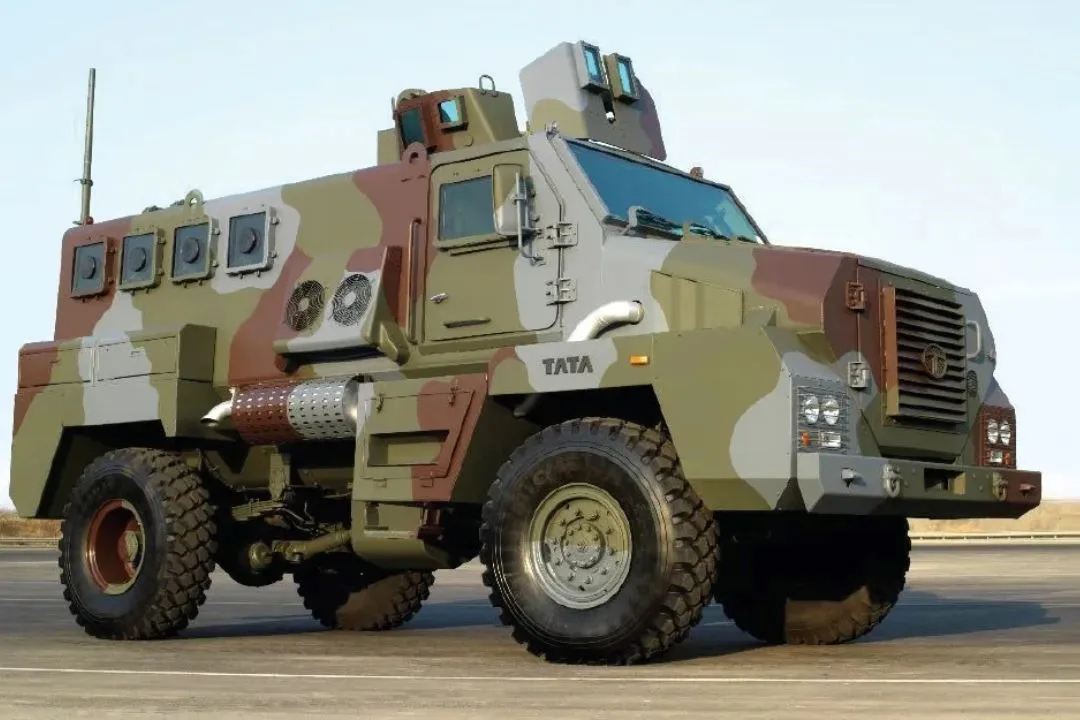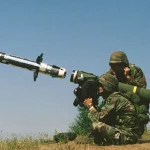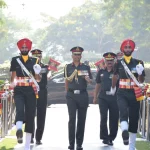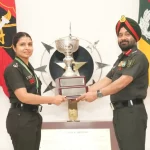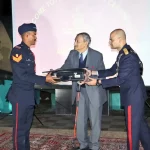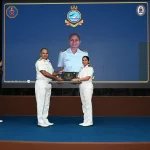TATA Advanced Systems Limited (TASL) has taken a major step toward strengthening India’s indigenous armoured vehicle capabilities with the development of the Tracked Advanced Armoured Platform (AAP-Tr) — a next-generation infantry combat vehicle designed to complement the wheeled AAP-Wh and form a unified, modular family under the Indian Army’s Futuristic Infantry Combat Vehicle (FICV) programme.
Together, these platforms aim to replace the ageing BMP-2 ‘Sarath’ fleet, offering advanced protection, mobility, and networked warfare capabilities in line with India’s Atmanirbhar Bharat initiative.
Enhanced Design and Protection
The AAP-Tr features a newly engineered V-hull design optimised for superior blast protection and crew survivability against mines and improvised explosive devices (IEDs). The hull structure incorporates layered composite armour and modular protection panels meeting STANAG Level 4/5 standards, ensuring scalable defence against ballistic and explosive threats.
Its mine-resistant geometry, reinforced floor plating, and floating crew seats significantly reduce the impact of underbody blasts. In addition, automated fire suppression and NBC (Nuclear, Biological, Chemical) filtration systems ensure safe operation in contaminated environments.
Powerful Mobility and Advanced Powertrain
The platform is powered by a 600–720 hp turbocharged diesel engine, paired with an automatic transmission and hydropneumatic suspension, giving it exceptional cross-country performance.
Key advantages include:
- High power-to-weight ratio for agile manoeuvrability.
- Modular drivetrain and advanced steering systems for precision control.
- Capability to traverse diverse terrains — from deserts and mud to mountainous regions.
An amphibious variant of the AAP-Tr is currently under conceptual evaluation, which would enhance operational flexibility in riverine and coastal missions.
Networked Digital Command Architecture
At its technological core, the AAP-Tr is built around TASL’s Common Electronic Mission Platform (CEMP) — a unified, open-architecture system designed to integrate seamlessly with the Indian Army’s future Battlefield Management System (BMS) and Combat Net Radio (CNR) network.
This enables:
- Real-time vehicle-to-vehicle (V2V) and vehicle-to-command (V2C) data links.
- Enhanced situational awareness and networked fire control.
- Plug-and-play support for remote-controlled turrets, ATGM launchers, and thermal imaging sights.
Modular Roles and Multi-Mission Configurations
Designed for operational flexibility, the AAP-Tr can be rapidly reconfigured for multiple battlefield roles. Planned variants include:
- Infantry Fighting Vehicle (IFV) with a 30 mm or 40 mm remote weapon station and twin ATGMs.
- Command & Control Vehicle with elevated antennas and digital consoles.
- Mortar Carrier supporting 81 mm or 120 mm automated mortar systems.
- Reconnaissance & Surveillance Vehicle equipped with mast-mounted radar and EO/IR sensors.
- CBRN Reconnaissance and Armoured Ambulance variants for specialised missions.
Up to 70% commonality in components across the AAP-Wh and AAP-Tr platforms ensures logistics simplification and lower life-cycle costs.
Production and Export Opportunities
TASL will utilise its established manufacturing ecosystem developed through the WhAP programme in collaboration with DRDO and the Indian Army. The tracked variant will expand domestic production lines, with plans for localisation of sub-systems such as engines, transmissions, and armour composites.
On the international front, TASL’s partnership with Morocco’s WhAP facility provides a ready export base for regional assembly and support, positioning the AAP family as an attractive option for nations in Africa, the Middle East, and Southeast Asia seeking modern, interoperable infantry vehicles.
Path Ahead
Following its conceptual studies in 2023–24, the AAP-Tr entered full-scale engineering validation in mid-2025, with field trials scheduled for 2026–27. The production phase could begin by 2028, aligning with the Indian Army’s planned replacement of over 2,000 BMP-2 Sarath vehicles.
With the AAP-Tr and AAP-Wh, India moves closer to a fully indigenous, digitally integrated mechanised fleet. The programme underscores the nation’s capability to design, develop, and produce world-class armoured platforms — a testament to India’s growing defence industrial maturity and commitment to self-reliance in military technology.

